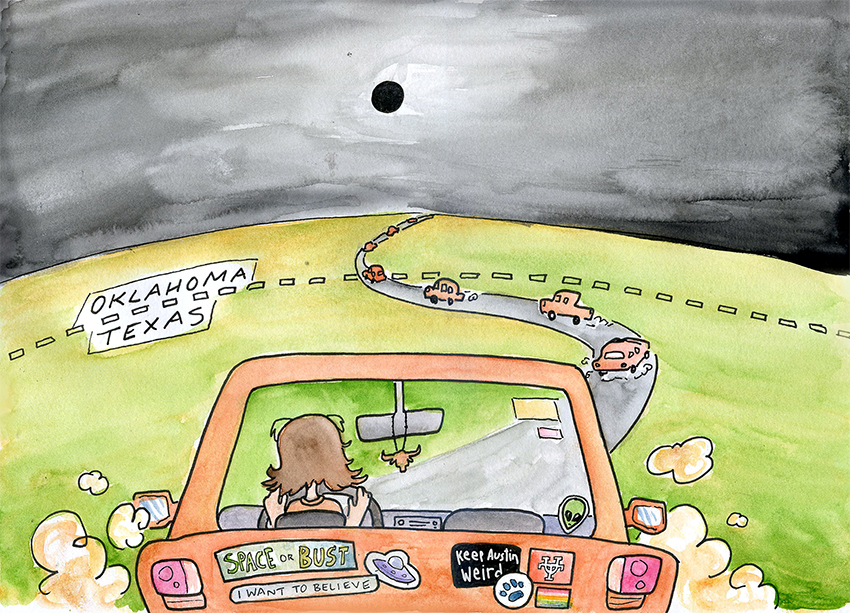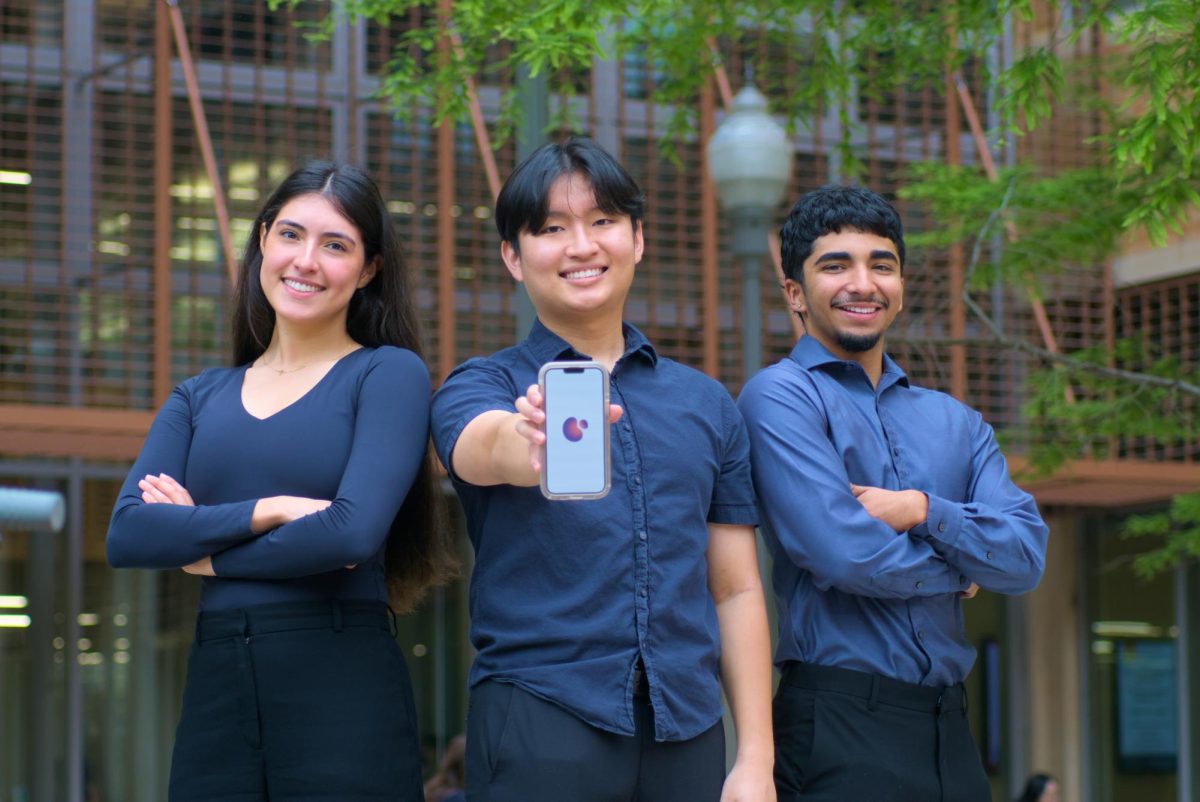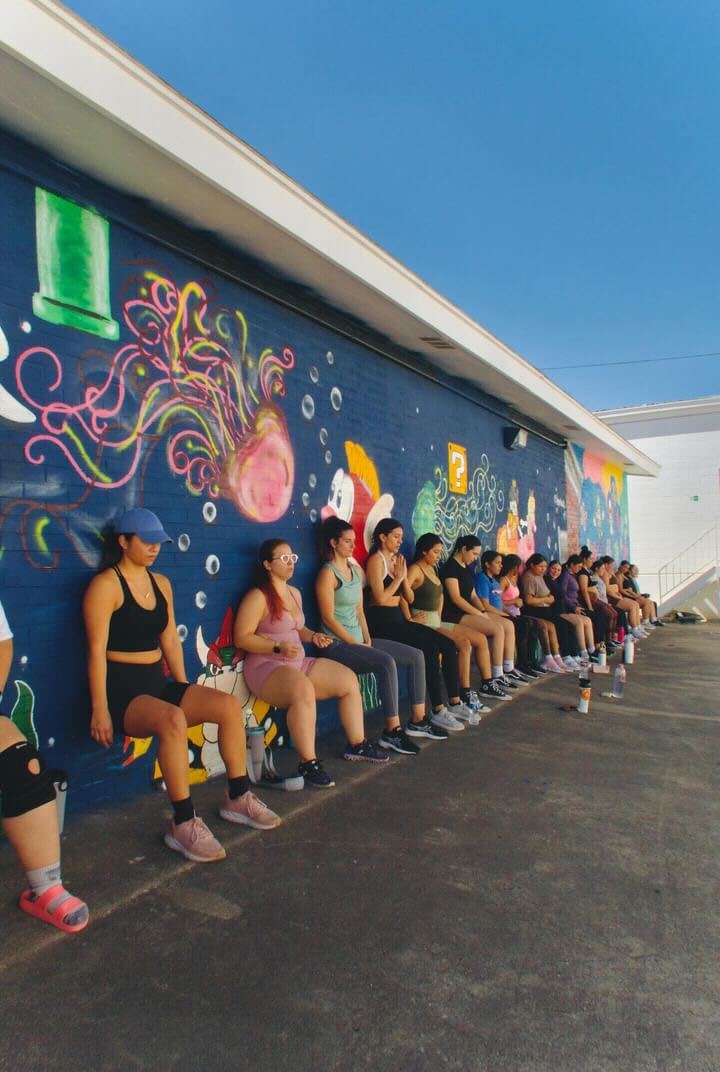Texas summers have two constants: scorching heat and an unrelenting sun. But for just a few minutes on Aug. 21, Texans can expect a brief reprieve from the sun’s rays in a spectacular pairing of timing and coincidence.
On Monday, Aug. 21 at 1:10 PM, the moon will move directly into the path of the sun, momentarily blocking light from reaching the earth. A partial eclipse will be visible all across North America, and those in the path of totality — the area over which the moon will completely cover the sun — will briefly experience the complete cover of nightfall in the middle of the afternoon.
“Everything will be serene,” said Emily Strickland, astronomy and physics junior and co-president of UT’s Astronomy Students Association. “From what I understand, there are no shadows during a total eclipse. Birds will stop flying. Everything will quiet down.”
Strickland, no stranger to interesting space phenomena, said the eclipse will be an eerie and beautiful experience. Having recently completed a fellowship studying dark matter, Strickland and her fiancé will travel to view the eclipse in Wyoming, one of the first places it will be visible during its fast-paced journey across the country.
Solar eclipses are notable not only for the impressive visual effect they produce, but also for their rarity: Nearly 100 years have passed since a total eclipse passed over the entire contiguous United States. The last time a total solar eclipse was visible anywhere in North America was 1979.
“You have to remember that Earth is almost 75 percent water, so for the eclipse to travel over a large stretch of land, let alone the contiguous United States, is rare,” Strickland said.
Short, sweet and bordering on supernatural, the eclipse will last a mere two minutes. But for astronomy and physics sophomore Rylee Ross, the marvel of the event itself is enough to warrant a multi-day, cross-country roadtrip.
“Imagine just blotting out the sun,” Ross said. “There are so many interesting things happening.”
In addition to staring at the moon itself (with proper safety glasses) from a prime viewing spot in Paducah, Kentucky, Ross said she hopes to observe how the eclipse affects objects on Earth.
“I’m going to find the nearest tree and watch how it reflects the light,” Ross said. “Every leaf will reflect light from the solar eclipse, so every beam becomes a minor solar eclipse.”
Ross’ trip to see the total eclipse will be just one event of many in her astronomy-packed summer. She recently traveled to UT’s McDonald Observatory in Fort Davis, Texas, with a Freshman Research Initiative group to conduct research imaging white dwarfs and the nuclear centers of galaxies.
In addition to the chance to see a singular astronomic event, astronomy senior Anna McGilvray considers her upcoming trip to Illinois to see the total eclipse as the perfect start to her last year of college.
“I saw a partial solar eclipse in Austin my freshman year,” McGilvray said. “It was a pretty cool experience because I hadn’t really found my place yet in the astronomy department.”
After studying the science of space for so long, McGilvray sees the trip as a must.
“I have to go — how could I not go?” McGilvray said.
While the trip to see the eclipse marks the first event of McGilvray’s last year in college, it’s only the beginning for incoming physics freshman Joseph Guidry, who is also traveling to Illinois with students from the astronomy and physics departments for the rare event.
Guidry said he was anxious to see the “diamond ring” effect — a phenomenon that takes place in the moments just before and after a total eclipse during which bits of sunlight peek through on either side of the moon, creating a visual effect that resembles glimmering diamonds nestled atop a shining band of light.
As for how he will spend the precious two minutes during eclipse itself, Guidry’s plan was simple.
“Take lots of pictures,” Guidry said, “and pray they come out well.”





















